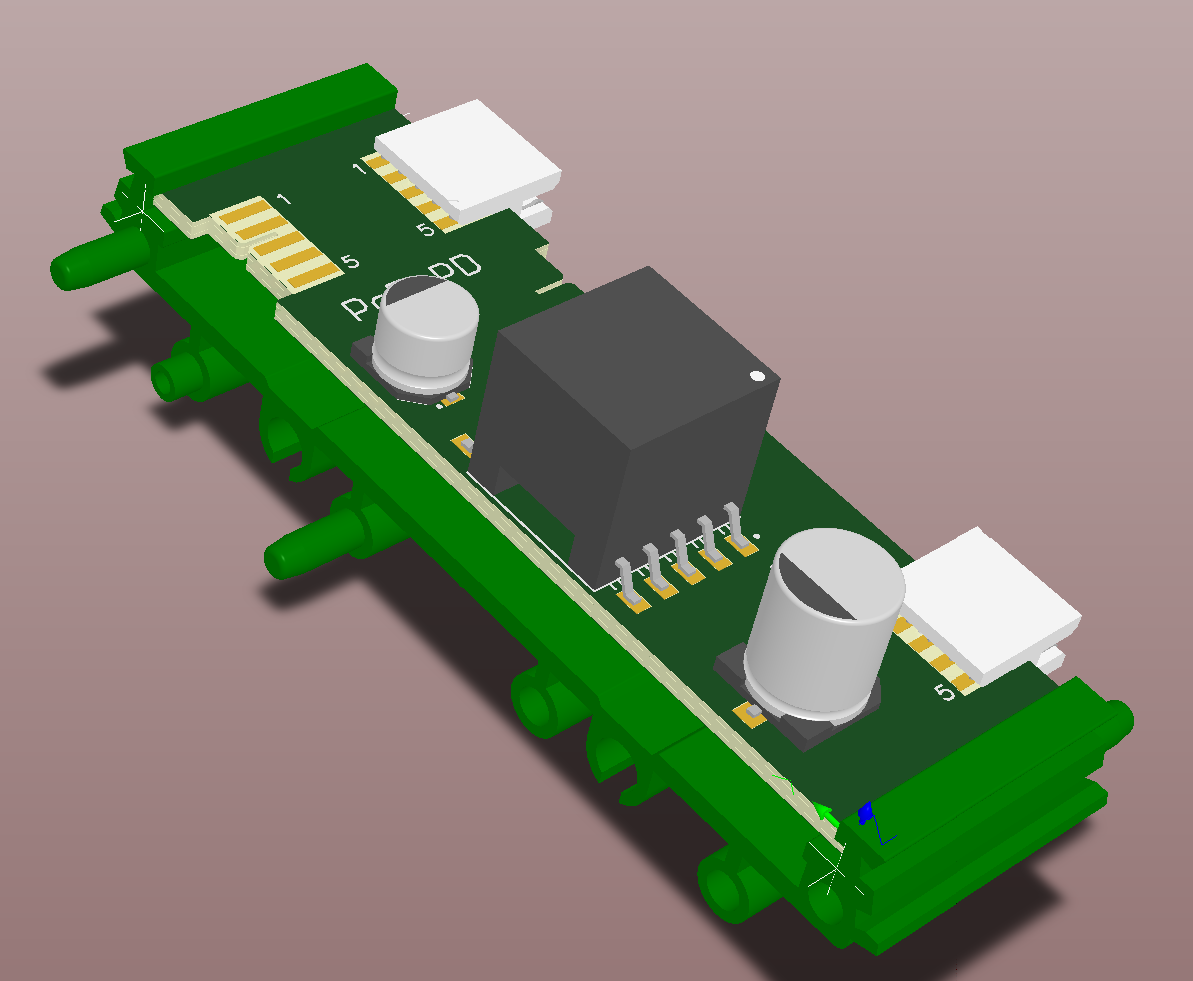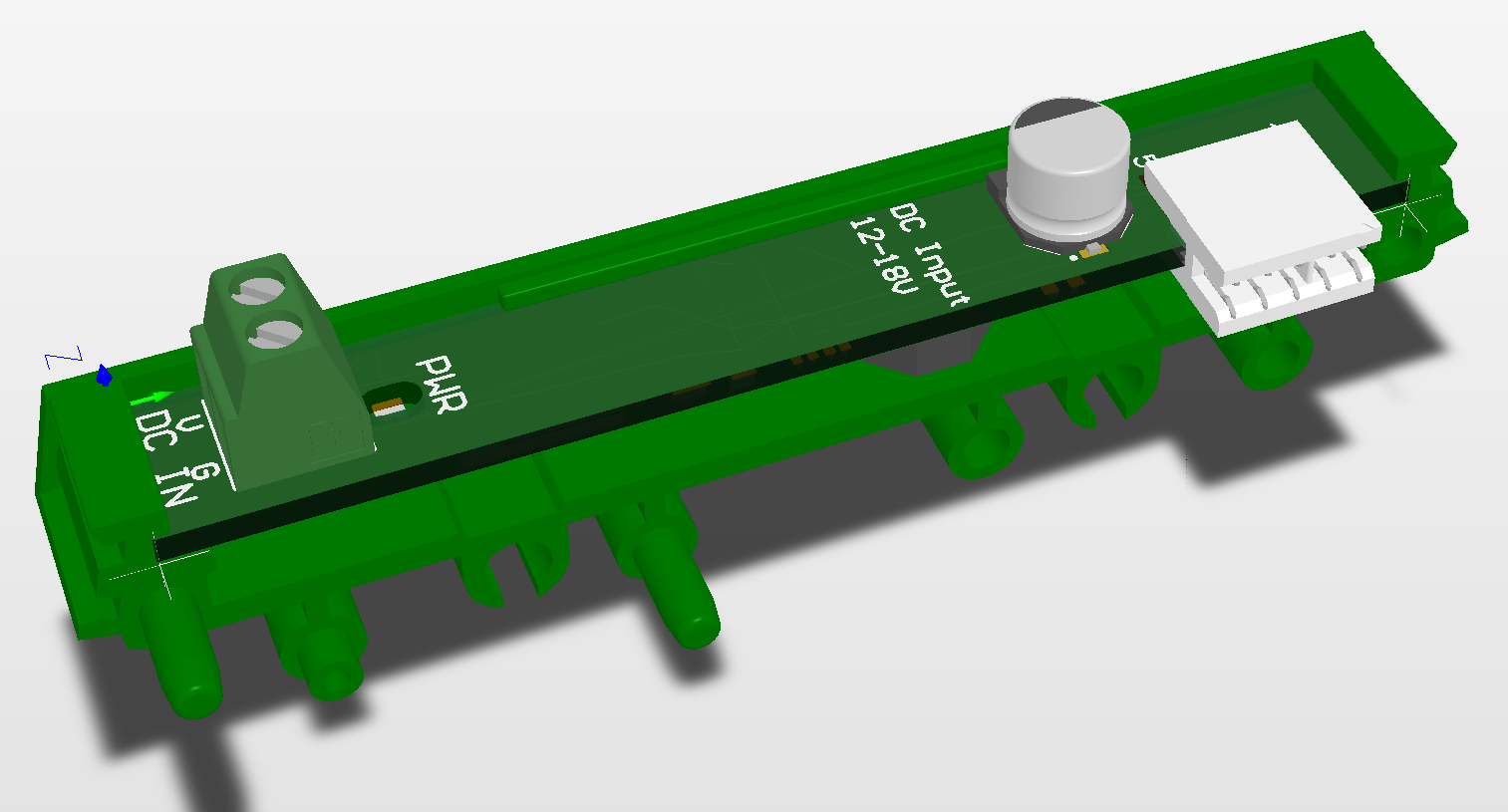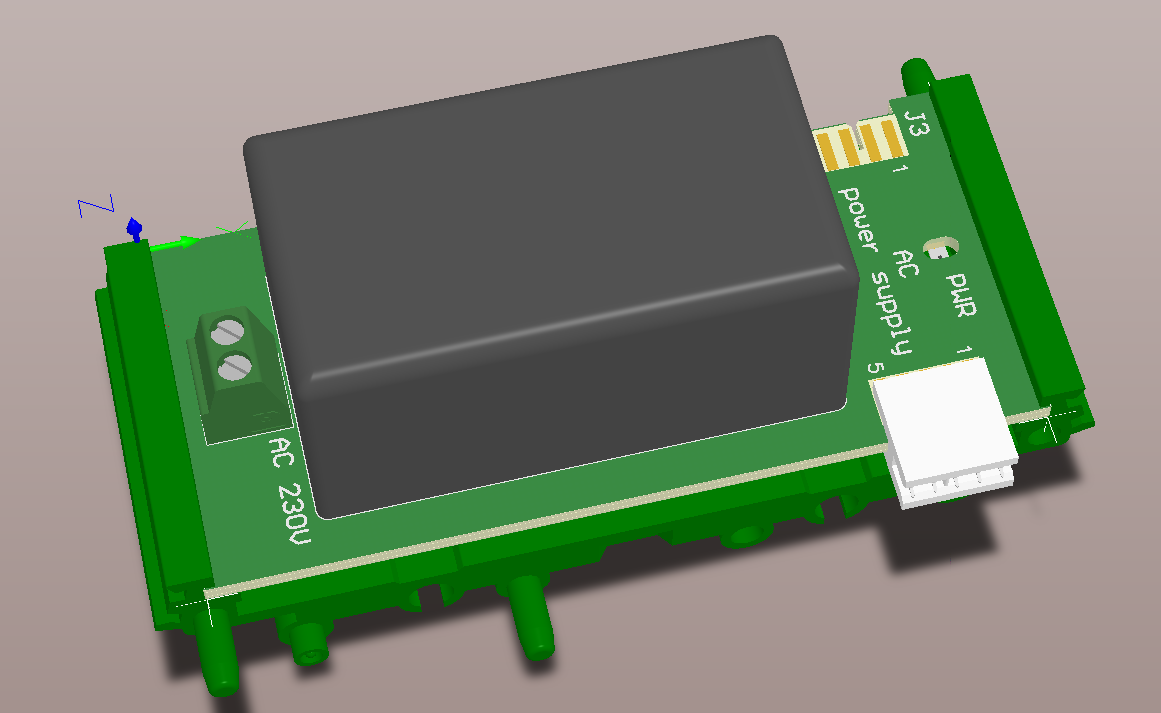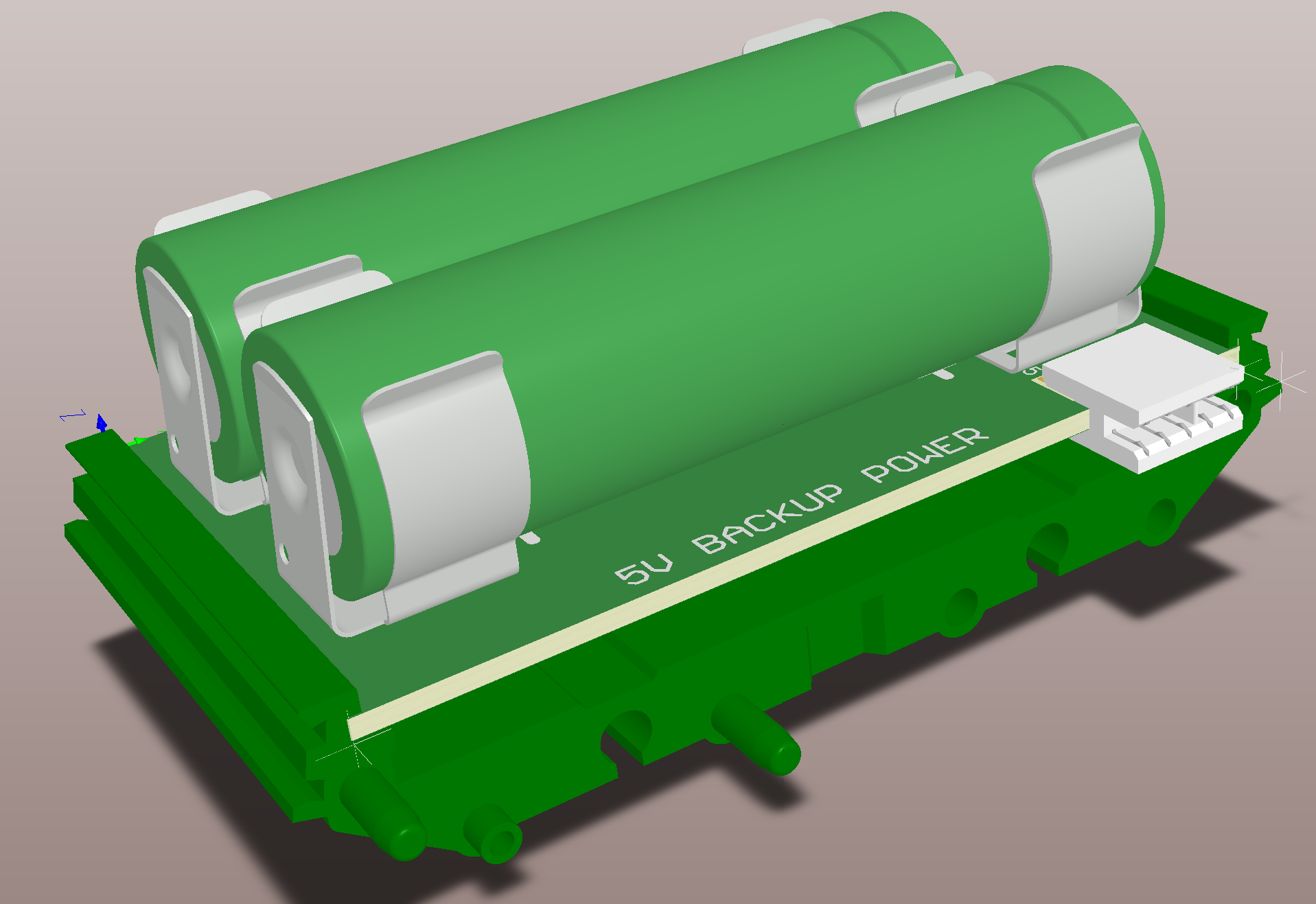-
Notifications
You must be signed in to change notification settings - Fork 11
Power supply options
The SensorBox system was designed to support various supply options. The basic supply channel is USB - each Hub can be supplied via USB charger. 1A wall wart does the job. However it delivers only 5V, while some peripheral modules may need 12V, i.e. relay modules and 0-10V analog outputs. For this purpose, several other options were prepared. All power supply options can be combined and used as redundant supply system when needed.
The module is based on Silabs PD chip. It supports up to 13W power and was already verified in original SensorBox design descried in Wiki. The PoE circuit gets the power from either ARM Hub or ESP-32 Ethernet PHY module and converts it to 12V. On-board synchronous converter further converts it to 5V rail. Max current capability is 3A@5V.

This is simple module that accepts regulated 12V and down-converts it to 5V,3A using synchronous buck converter. Input is protected against transients and negative polarity with TVS and PTC fuse

This module is based on popular, certified 10W MeanWell SMPS module. The SMPS module delivers 12V wich is then down-regulated using synchronous buck covnerter. Max current capability is 2A@5V. It is limited by max power of the SMPS module.

Battery backup is essential in LoRa or GPRS applications where connectivity is maintained even without power supply. Example use case is alarm installation monitoring, meter readout. It could be essential also as a kind of UPS to enable smooth Linux system shutdown with logging of the power failure state.
Since all logics is supplied by 5V rail, and anyway there is no reason to supply 12V rail, switch mode charger/power path was proposed. It is based on interesting chip from MPS : MP2639A. It provides charging of dual cell battery, buck converter, protection, fuel gauge, etc. I want to use two 18650 cells. They are popular, low cost, can be extracted from Laptop battery pack and won't disappear from the market like other popular form factors i.e. used in mobile phones. They also have significant capacity of over 3Ah. Two such cells can deliver 3*7.4 Wh of energy and supply the home automation system controller for several hours.
